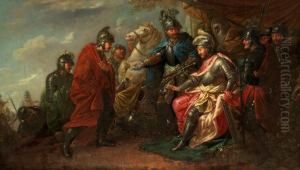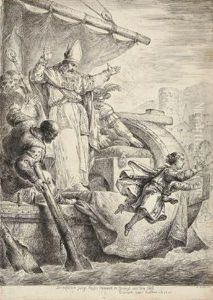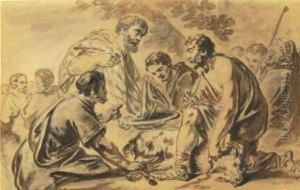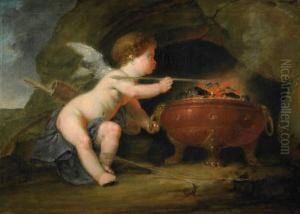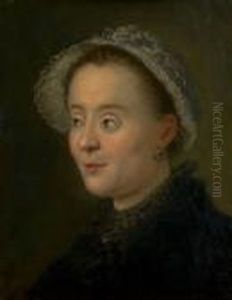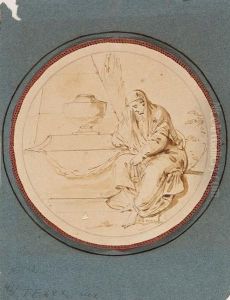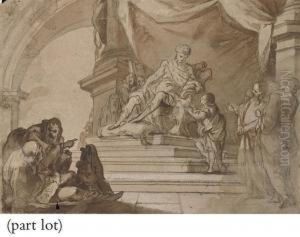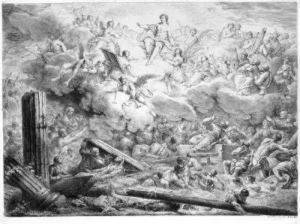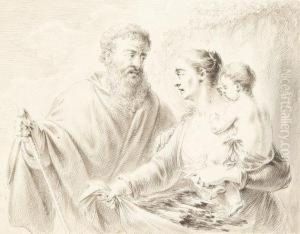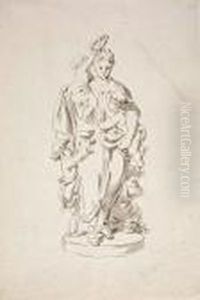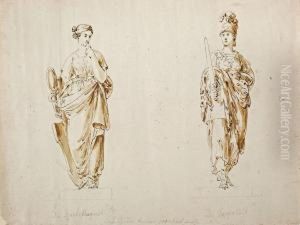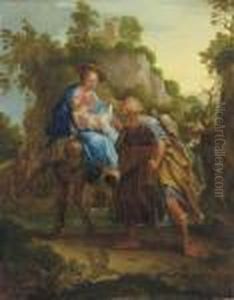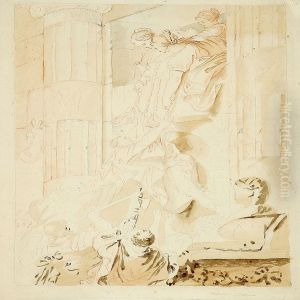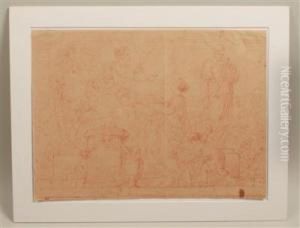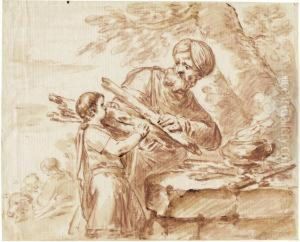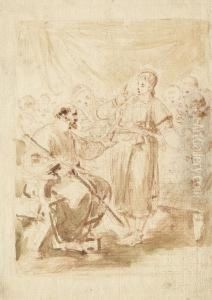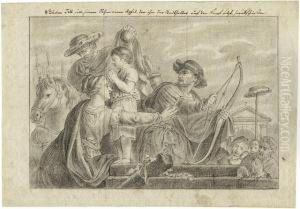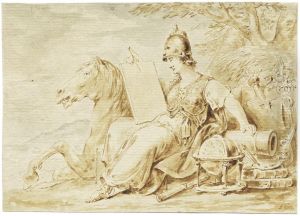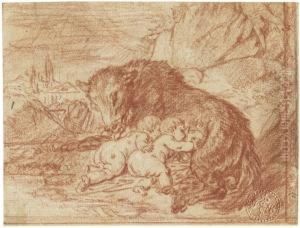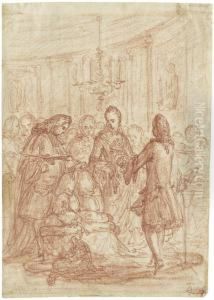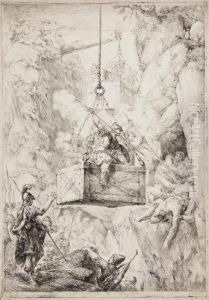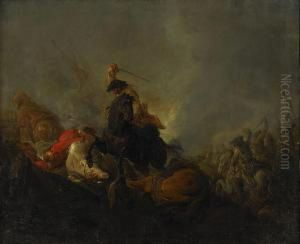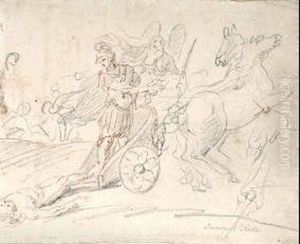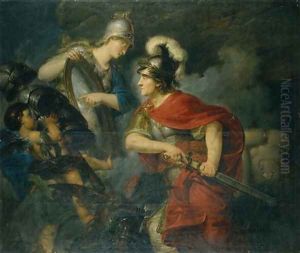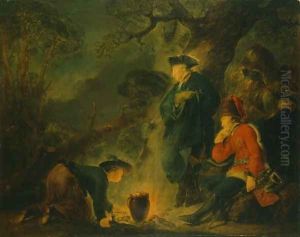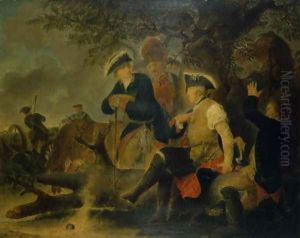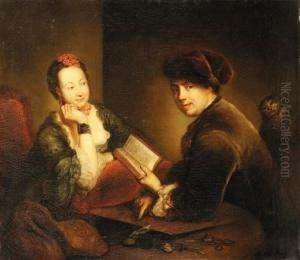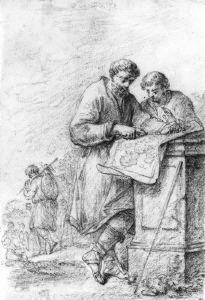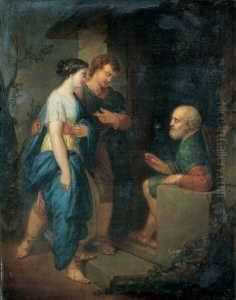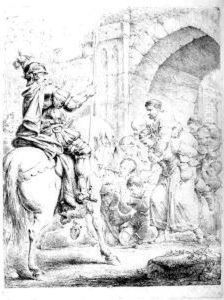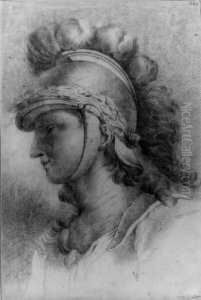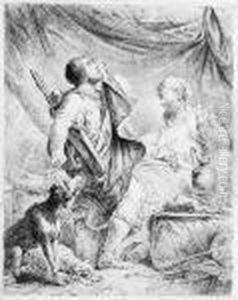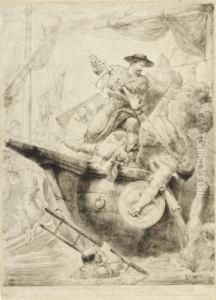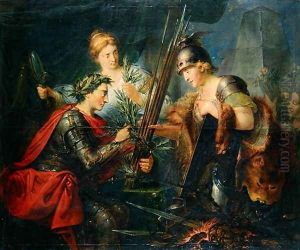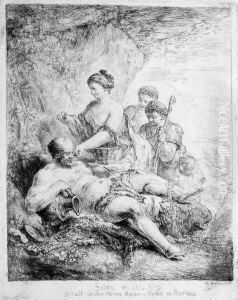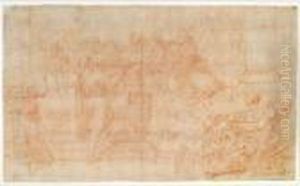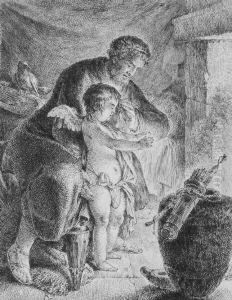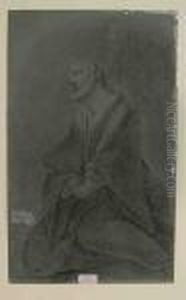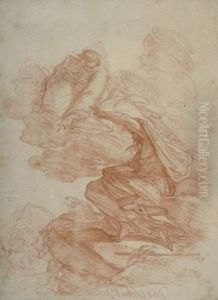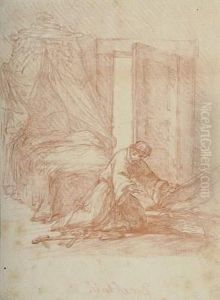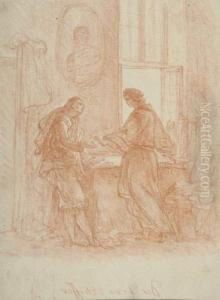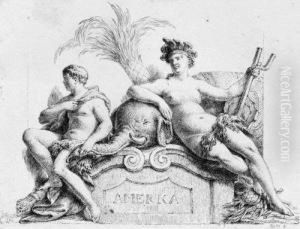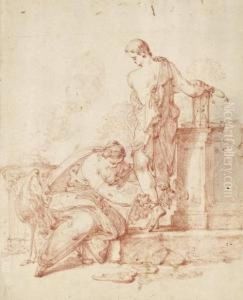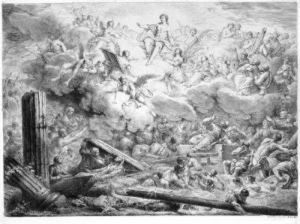Christian Bernhard Rode Paintings
Christian Bernhard Rode was a German painter and engraver who was born on July 22, 1725, in Berlin. He was recognized as one of the most prominent artists in Berlin during the 18th century. Rode came from an artistic family; his father was the sculptor Christoph Rode, and his brother, Johann Heinrich Rode, also pursued a career in painting. Under the influence of his family, Christian Bernhard developed an early interest in the arts and started his artistic training with his father.
In 1744, he went to study under the French painter Antoine Pesne, who was the court painter in Prussia at the time. Pesne's influence is evident in Rode's early works, which exhibit the Rococo style's characteristic lightness and grace. In 1748, Rode continued his education in Paris, where he was greatly influenced by the French Rococo artists. After spending four years in Paris, he traveled to Italy in 1752 to study the great masters of the Renaissance and Baroque periods. His stay in Italy lasted until 1755, and during this time, he was particularly impressed by the works of Raphael.
Upon his return to Berlin, Rode became a member of the Prussian Academy of Arts and later served as the director from 1783 until his death. He was instrumental in shaping the Academy as a significant institution for the arts in Berlin. His tenure as director saw the Academy grow and gain prominence in the artistic landscape of Germany.
As an artist, Rode was versatile and prolific. He worked in various mediums, including painting, engraving, and drawing. His subjects ranged from religious and mythological scenes to portraits and historical compositions. One of his most famous works is the ceiling painting in the Apollo Hall of the Royal Palace in Berlin, which showcases his mastery of large-scale decorative schemes.
Christian Bernhard Rode passed away on June 28, 1797, in Berlin. His legacy is marked by his significant contributions to the Prussian Academy of Arts and his influence on the next generation of German artists. He played a crucial role in the development of the arts in Germany during the Enlightenment period, and his works continue to be appreciated for their elegance and historical value.
